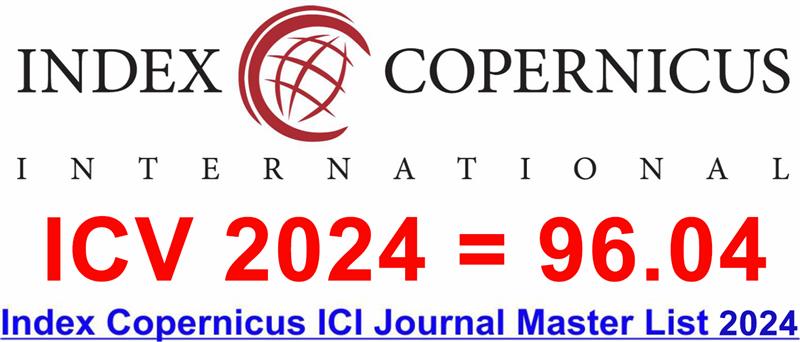English-Dubbed Chinese Movies for ESL Listening Skills & Levels of Anxiety in English Language Teaching
DOI:
https://doi.org/10.60072/ijeissah.2024.v2i02.010Abstract
The purpose of this study is to investigate the efficacy of employing English-dubbed Chinese movies (EDCM) to augment English as a second language (ESL) learners’ listening capabilities and to assess its impact on their anxiety levels in English language teaching. Participants in this research included 20 Form 4 students from Pay Fong High School, a private Chinese secondary school in Malaysia. In taking the sample, the researcher utilized a purposive sampling method and adopted a quantitative research design. Customized vocabulary tests were administered as pre-tests and post-tests, and tools such as the Language Learning Anxiety Scale and the Positive and Negative Affect Schedule (PANAS) were employed to evaluate the influence of EDCM on the students. The outcomes of the pre-tests, post-tests, and anxiety assessments indicate a successful enhancement in their auditory comprehension and also affirm that EDCM effectively lowers students’ Affective Filter Levels. In conclusion, EDCM can serve as an advantageous tool for ESL learners’ listening skills and help to reduce their anxiety level when learning the English language.
Keywords:
English-Dubbed Chinese Movies (EDCM), ESL, ELT, Affective Filter Levels, Listening SkillsReferences
Ardini, S. N. (2015). Top-down and bottom-up processing in listening. Which one is problematic?: A case of Universitas PGRI Semarang. ETERNAL (English Teaching Journal), 6(2). DOI: https://doi.org/10.26877/eternal.v6i2.5834
Bada, S. O., & Olusegun, S. (2015). Constructivism learning theory: A paradigm for teaching and learning. Journal of Research & Method in Education, 5(6), 66-70. https://doi.org/10.9790/7388-05616670
Cahyanti, R. (2012). Developing tasks by using songs for teaching listening for grade X students of Man Yogyakarta II in the academic year of 2010/2011. Yogyakarta State University.
Chuen, N. W. (2002). Film as a medium for improving EFL students’ English: a case study. Unpublished Masters Thesis). The Chinese University of Hongkong.
Demir, H. C. (2021). Affective filter in EFL reading classes: the application readers' theatre (Master's thesis, Maltepe Üniversitesi, Lisansüstü Eğitim Enstitüsü).
Fussalam, Y. E., Lestari, R., & Anggelia, R. Y. (2019). A study of listening skills through movie: a review of the current literature. Journal Of Language Education and Development (JLed), 1(2), 158-168.
Getie, A. S. (2020). Factors affecting the attitudes of students towards learning English as a foreign language. Cogent Education, 7(1), 1738184.
Goctu, R. (2017). Using movies in EFL classrooms. European Journal of Language and Literature, 3(2), 121-124.
Hakim, B. M. (2019). A study of language anxiety among English language learners in Saudi Arabia. Arab World English Journal (AWEJ) Volume, 10.
Hermansyah, S., & Hasan, H. (2020). Exploring the Impact of English Movies to Improve the Students’ Listening Comprehension. Majesty Journal, 2(2), 32-36. DOI: https://doi.org/10.33487/majesty.v2i2.586
Horwitz, E. K., Horwitz, M. B., & Cope, J. (1986). Foreign language classroom anxiety. The Modern language journal, 70(2), 125-132. https://doi.org/10.2307/327317
Lai, W., & Wei, L. (2019). A critical evaluation of Krashen’s monitor model. Theory and Practice in Language Studies, 9(11), 1459-1464. DOI: http://dx.doi.org/10.17507/tpls.0911.13
Lina, B. (2018). New Trends in Higher Education: Using Movies to Teach Listening Comprehension. In Proceeding of ADVED 2018-4th International Conference on Advances in Education and Social Sciences (pp. 564-571).
Menezes, V. (2013). Second language acquisition: Reconciling theories. Open Journal of Applied Sciences, 3(07), 404. http://dx.doi.org/10.4236/ojapps.2013.37050
Nath, P. R., Mohamad, M., & Yamat, H. (2017). The effects of movies on the affective filter and English acquisition of low-achieving English learners. Creative Education, 8(08), 1357.
Pamungkas, I. B. A., & Adi, S. S. (2020). Students’ Perception About Improving English Listening Skills Using Movies Among the Vocational High School Students. Erudio Journal of Educational Innovation, 7(2), 128-138.
Polat, M., & Eristi, B. (2019). The effects of authentic video materials on foreign language listening skill development and listening anxiety at different levels of English proficiency. International Journal of Contemporary Educational Research, 6(1), 135-154.
Rahardjo, A., & Pertiwi, S. (2020). Learning motivation and students’ achievement in learning English. JELITA, 1(2), 56-64.
Roslim, N., Azizul, A. F., Nimehchisalem, V., & Abdullah, M. H. T. (2021). Exploring movies for language teaching and learning at the tertiary level. Asian Journal of University Education (AJUE), 17(3), 271-280.
Sugiarto, D., Mega, I. R., & Sugiarto, D. (2020). Speaking skills in correlation with English speaking learning habit and self-confidence of vocational high school students. Journal of Foreign Language Teaching and Learning, 5(2).
Sumarsono, D., Muliani, M., & Bagis, A. K. (2020). The forecasting power of task-based language teaching and self-efficacy on students' speaking performance. Journal of Languages and Language Teaching, 8(4), 412-421. DOI: https://doi.org/10.33394/jollt.v8i4.2848
Tridinanti, G. (2018). The correlation between speaking anxiety, self-confidence, and speaking achievement of Undergraduate EFL students of private university in Palembang. International Journal of Education and Literacy Studies, 6(4), 35-39. DOI: https://doi.org/10.7575/aiac.ijels.v.6n.4p.35
Wang, Z. (2015). An analysis on the use of video materials in college English teaching in China. International Journal of English Language Teaching, 2(1), 23-28. https://doi.org/10.5430/ijelt.v2n1p23
Watson, D., Clark, L. A., & Tellegen, A. (1988). Development and validation of brief measures of positive and negative affect: the PANAS scales. Journal of personality and social psychology, 54(6), 1063. https://doi.org/10.1037/0022-3514.54.6.1063
Weegar, M. A., & Pacis, D. (2012, January). A comparison of two theories of learning--behaviorism and constructivism as applied to face-to-face and online learning. In Proceedings e-leader conference, Manila (Vol. 6).
Zafar, M. (2009). Monitoring the 'monitor': A critique of Krashen's five hypotheses. Dhaka University Journal of Linguistics, 2(4), 139-146.
Zhang, Y. (2023). Teaching Strategies of College English Listening based on Affective Filter Hypothesis. The Educational Review, USA, 7(1), 26-30. https://doi.org/10.26855/er.2023.01.007
























